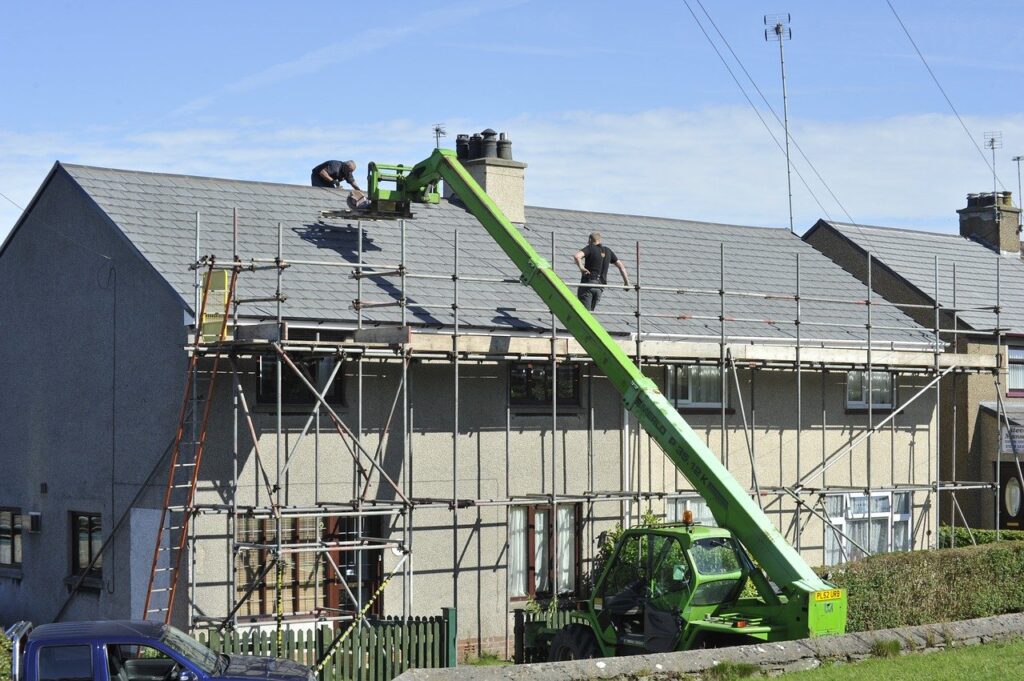Many countries across the globe consider the construction sector to be of strategic importance. It is the industry that delivers the building and infrastructure needs of a society and its economy.
In the European Union, the construction industry generates about 9% of gross domestic product and provides 18 million direct jobs. The European Union’s internal market offers its international partners an access of more than 500 million people and about 13 trillion euros in GDP.
The European construction chain includes varied and valued economic activities that include:
- Extraction of raw materials
- Manufacture and distribution of construction products
- Design, construction, management and control of construction works
- Maintenance, renovation, and demolition
- Recycling of construction and demolition waste
These valuable activities predetermine the role of the construction sector in the delivery of the European Union’s Europe 2020 goals for smart, sustainable and inclusive growth. The construction sector has a direct impact on the safety of workers and the quality of life. Buildings, infrastructure, and construction products have a substantial impact on energy and resource efficiency, the fight against climate change and in the environment in general. There are five objectives that the EU strategy for sustainable competitiveness in construction is focused on:
- Investments
- Jobs
- Resource Efficiency
- Regulation
- Market Access
The EU has compiled a comprehensive legal and regulatory framework for the construction sector including European standards as well as financial tools, information platforms, labeling systems and related instruments. As a major player in world trade, the EU supports open markets, clear regulatory frameworks, and the elimination of trade barriers. It is committed to opening opportunities for sustainable construction, cooperate with partners and share its expertise.
Buildings and construction works
The EU developed policies for buildings that are based on an integrated approach that covers sustainability (specifically regarding energy and resource efficiency, and health and safety issues). Obviously, the market is large and quite complicated to cover and includes new buildings and the renovations of existing ones.
Member States of the EU retain the competency to regulate issues covering safety, indoor air quality, noise, and radiation. The EU Member States also have the responsibility to implement legislation set forth by the EU. Local and state authorities are responsible for promoting low-carbon and resource-efficient cities and should build on the stakeholders’ and citizens’ involvement.
Sustainable construction
In the EU definition, sustainable construction is a dynamic between developers of new solutions, investors, the construction industry, professional services, industry suppliers and other relevant parties towards achieving sustainable development. There are a couple of aspects under sustainable construction and may include:
- Design and management of buildings and constructed assets
- Choice of materials
- Building performance
- Interaction with urban and economic development and management
Depending on the local socio-economic context, approaches may vary. For example, some member countries prioritise resource use (energy, materials, water, land use) while others consider social inclusion and economic cohesion as determining factors. According to an EU roadmap, sustainable buildings combine improved energy performance and reduced environmental impact throughout their lifecycle. Their occupants enjoy better health, well-being and productivity gains that translate into cost savings. Buildings have the potential to reach a 90% reduction of their greenhouse gas emissions by 2050.
Zero-energy buildings
By 2030, the EU aims to cut its annual primary energy consumption by 30%. It is the building sector and public transportation that have the greatest savings potential. In line with this, the EU released the Energy Performance of Buildings Directive (EPBD) to promote the improvement of the energy performance of buildings, taking into account outdoor climatic and local conditions, as well as indoor climate requirements and cost-effectiveness.
The directive applies to new buildings and old ones that are going through any sort of renovation. The EPBD establishes a minimum requirement for energy performance and requirements related to strengthening the role of energy performance certificates and inspections. It foresees that all new buildings shall be nearly zero-energy buildings by the end of 2020 and 2018 for public-owned/public-occupied buildings.
‘Nearly zero-energy” is defined as a building having very high energy performance — energy used is from renewable sources, including energy produced onsite or nearby. EPDB implementation is supported by EU standards that deal with the thermal performance of buildings and/or building components, ventilation, light and lighting, heating systems, building automation, controls, and building management.
The Energy Efficiency Directive (EED) also obliges EU member states to establish longer-term renovation strategies — public authorities are required to set an example by renovating central government buildings with insufficient energy performances (3% of said buildings in each year).
Following the EPBD directive, EU member states also have established certification systems that rate the energy performance of buildings. This certification includes energy rating and recommendations for cost-optimal or cost-effective improvement of energy performance.
EU support
The EU supports the European construction sector initiatives with the European Construction Sector Observatory providing European policy makers and stakeholders with regular analysis and comparative assessments of the market conditions and policy developments in the EU supporting the exchange of experience between member states and stakeholders regarding definition, implementation, monitoring, and assessment of policy measures and impact related to construction enterprises including sustainable development objectives.
Then there’s the EU Building Stock Observatory that helps with monitoring and steering improvement of energy efficiency in buildings and supporting the implementation of EPBD. This provides a preview of the EU building stock energy performance and quality data for all member states.
The European Portal for Energy Efficiency of Buildings, on the other hand, allows construction professionals, contractors, and other stakeholders to find and share best practices on energy solutions for infrastructure.
Resource efficiency
Reducing the environmental impact of resources such as materials, water, and embodied energy, throughout the life and lifecycle of a building is of utmost importance in sustainable buildings.
Although the circular economy is providing opportunities for better waste management and uptake of recycled materials by the market, there is still more to be done in extraction of building materials, demolition, and recycling of materials, and also more to go in the area of renovation of existing buildings.
The main objectives are to set environmental performance standards, provide incentives for citizens and public authorities to choose resource-efficient products and services, and stimulate companies to innovate. The whole life-cycle mindset is geared at lowering the environmental impacts and reduce overall resource use from raw material extraction, manufacture, distribution and use, and reuse, recycling and ultimate disposal.
The framework for potential environmental impact assessment is provided for by Life Cycle Assessment and Life Cycle Costing. The objective is to promote lifecycle thinking in business and policymaking.
The waste framework directive has significant contribution when it comes to resource efficiency with the framework of treating waste as secondary raw material. The objective of the directive is to reach 70% of preparing waste for reuse, recycling, and other forms of material recovery of construction and demolition waste.
Structural design
In imposing safety of buildings and civil engineering works, the Eurocodes play an important role. The Eurocodes are a series of European standards providing a common approach for the structural design of buildings and other civil engineering works and are preferred reference for technical specifications in public contracts. They cover the basis of structural design, actions on structures and the design of concrete, steel, composite, timber, masonry and aluminium structures together with geotechnical, seismic and structural fire design.
This article is based on the European Commission Construction Sector brochure and the various communication reports from the Commission to the European Parliament and Council Sustainable Construction Strategy. Construction activities have become more environmental-friendly with newer technologies.
Using smart building approaches save more energy and has so much more benefits. There’s a feedback mechanism with people’s environmental awareness as well – an environmental consumer demand drives the development of new building materials and methods. Complying to legislations and standards efficiently mitigates risks and in turn, improves overall productivity. To further better construction productivity, we have a free downloadable ebook focused on making a construction site more efficient.



